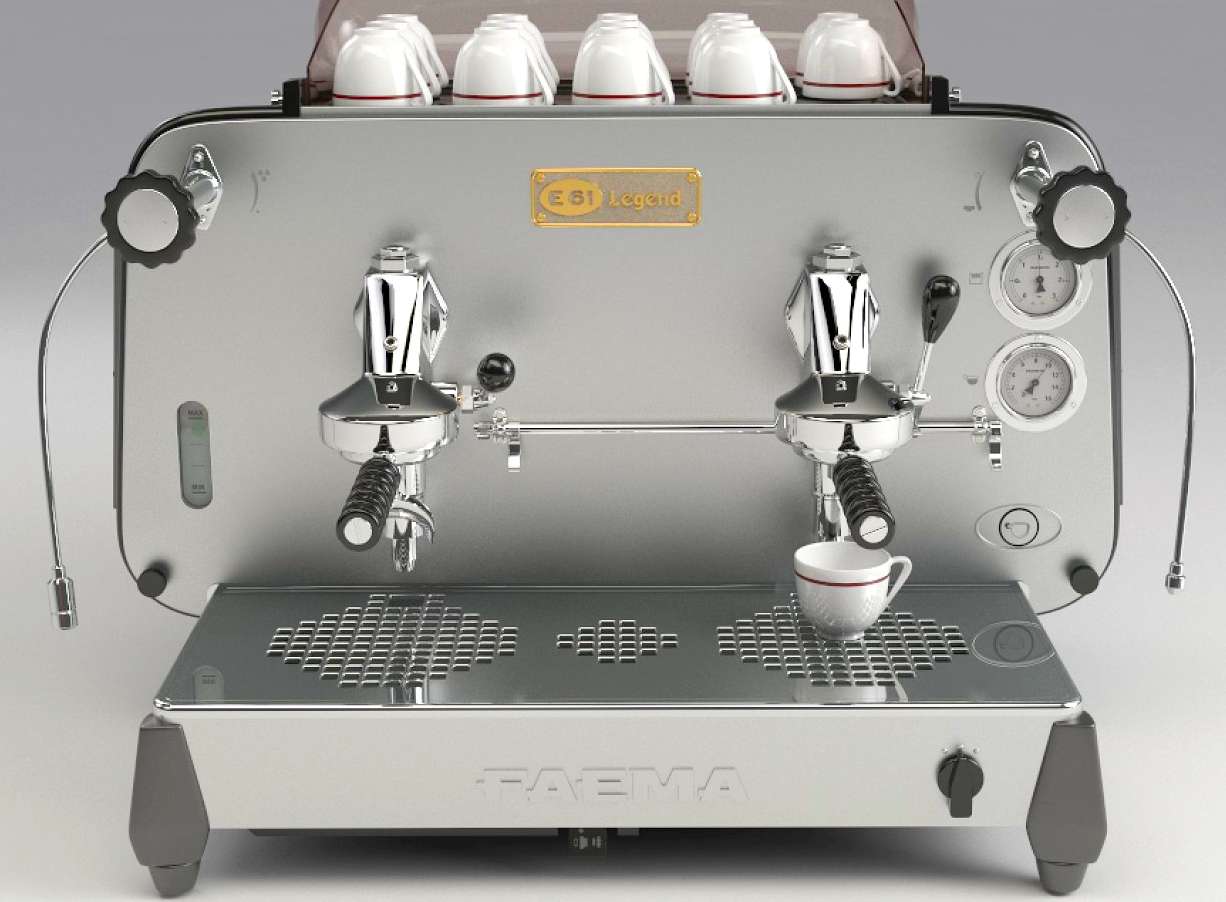One of the most sold types of espresso machines is the semiautomatic espresso machine. This is the perfect choice for espresso enthusiasts who aim to learn and experiment with coffee – it allows them to play with different recipes to create their favorite popular espresso drinks.
There is also the inexpensive semiautomatic, which is the choice of those on a tight budget. But at the other end of the spectrum, the espresso hobbyist, who will buy expensive equipment, in order to have a better control over brewing process.
In this article we will go over the components of a semiautomatic espresso machine, and we’ll review a few great espresso machines in each price category.
What Is a Semiautomatic Espresso Machine?
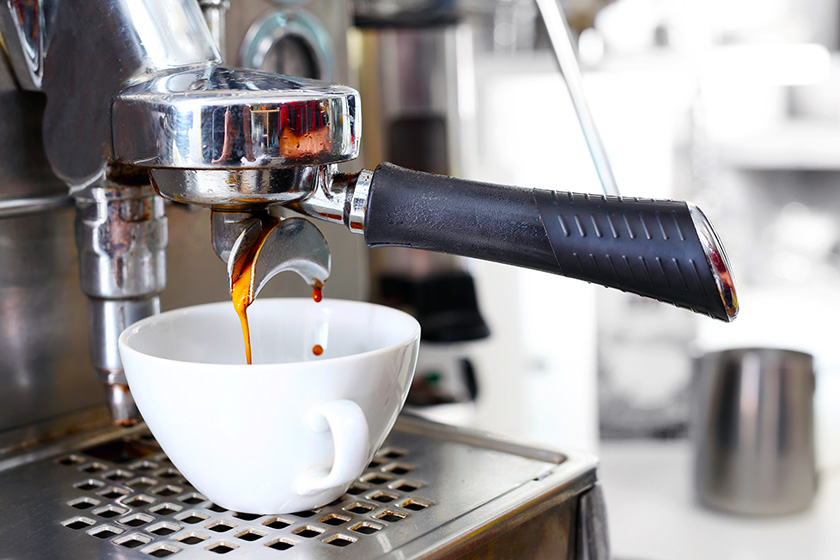
A semi-automatic espresso machine is kitchen appliance that automate only some aspects of the espresso brewing process. They require more involvement from the barista, and require some skills and knowledge about the extraction process.
Semiautomatic espresso machines are the choice of coffee aficionados because they are very reliable compared to automatic machines, and they provide perfect control over the brewing variables.
Sometimes semiautomatics are called manual espresso machines, but that is a misnomer. The semiautomatic controls the following variables:
- pressure – 9 bars,
- brew temperature – around 200°F.
- steam temperature, for milk beverages – around 260°F
The barista will still have to perform a variety of operations such as:
- grinding the coffee,
- measuring the dose,
- tamping in the portafilter,
- locking the portafilter in the machine,
- Starting and stopping the brewing process at the right moment.
What Does It Look Like to Brew with a Semi Automatic
When it comes to brewing a perfect cup of espresso, semiautomatic espresso machines play a crucial role. These machines offer control and precision, allowing you to customize your brew according to your taste preferences. Let’s dive into the step-by-step explanation of the brewing process using a semiautomatic espresso machine.
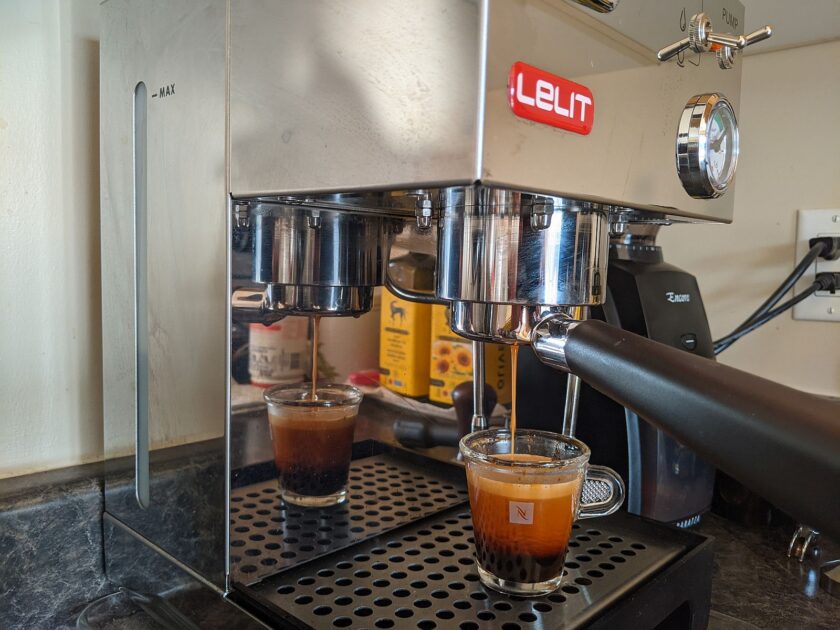
Grinding the coffee beans to a specific fineness
Before starting the brewing process, it is essential to grind your coffee beans to the appropriate fineness. This step ensures the extraction of flavors and aromas. Depending on your machine and personal preference, you can adjust the grind size to achieve the desired extraction.
Tamping the ground coffee into the portafilter
Once you have ground your coffee beans to the desired fineness, it’s time to tamp them into the portafilter. Tamping involves evenly pressing the coffee grounds into the portafilter using a tamper. This step ensures a consistent extraction and maximum flavor extraction.
Inserting the portafilter into the group head
After tamping the coffee grounds, insert the portafilter into the group head of the espresso machine. The group head is where the water comes into contact with the coffee grounds during extraction. Ensure a secure fit to prevent any leaks or uneven extraction.
Controlling water flow and pressure during extraction
One of the advantages of using a semiautomatic espresso machine is the ability to control the water flow and pressure during extraction. By adjusting the brewing parameters, such as water temperature and pressure, you can fine-tune the extraction process to achieve the desired flavors and strength.
Timing and adjusting the shot length
The timing and shot length can significantly impact the taste of your espresso. With a semiautomatic machine, you have control over the shot length. Experimentation with different shot lengths will help you find the perfect balance between acidity, sweetness, and bitterness in your espresso.
Key Features and Benefits – Why Should You Choose A Semiautomatic Espresso Machine?
Variable Control of the Extraction Process
One of the standout features of semi-automatic espresso machines is the ability to control various aspects of the extraction process. From adjusting the grind size and tamping pressure to controlling water temperature and brewing time, you have the power to fine-tune every parameter to suit your personal taste preferences and desired strength of each shot.
Barista Involvement for Personalized Touch
Embrace your inner barista! With a semi-automatic machine, you can actively participate in the brewing process, allowing you to add a personalized touch to each cup of espresso. From manually starting and stopping the extraction to perfecting latte art with your own creative flourishes, the possibilities are endless for creating coffee masterpieces that reflect your unique style.
Enhanced Brewing Experience and Quality
Elevate your coffee experience with a semi-automatic espresso machine. By providing precise control and involving you in the process, these machines ensure optimal extraction and consistency, resulting in a fuller and more nuanced flavor profile. Experience the richness, aroma, and crema layer of professionally brewed espressos right in the comfort of your own home.
How to Choose a Semiautomatic Espresso Machine
Usually, the most important factor is the budget. If the budget wasn’t an issue, we would probably all buy the fanciest machine, even if we don’t need the features. Just in case… Reliability, materials, all matter. Let’s take a look at all of them, and see how can they affect your purchase.
Price
In reality, for many espresso beginners, even the mid-range looks too expensive. For the rookie, espresso brewing is still unknown territory. Rancilio Silvia and Gaggia Classic, two of the classic choices for the mid range, are many times completely out of the budget range of a rookie. The beginner tries to squeeze the budget to a minimum, because they don’t want to commit too many resources.
However, this approach might not be the best; many will give up too soon because poor equipment will only accentuate the lack of experience.
From a price perspective, we can distinguish:
- the cheap semiautomatic espresso machines – price range $100 to $350
- the mid-range semiautomatics, – price range $350 to $1000
- and the prosumer espresso machines – $1000 – 3500
As a note, the prosumer machines are often commercial espresso machines, and their reliability and features just make them more appealing for the prosumer.
Features vs Reliability
What are we looking for in a great semiautomatic espresso machine?
Many people say reliability, others, including myself, choose features. Are they mutually exclusive? Not necessarily, but I hate to say, the more features your machine has, the more chances to break there are.
That doesn’t mean you have to avoid nice machines like the Breville BES870XL, and buy the classic Rancilio Silvia. Breville makes great espresso machines, and the units from the BES line have some great features. These features will help you control the brewing down to the finest details. On the other hand, Silvia has a big brass boiler, and it is a big chunk of metal that is just resilient.
If you look for 100% reliability and years of use and abuse, the Rancilio Silvia, or Gaggia Classic are the perfect choice. But I’m pretty sure you’ll get bored of it, and you’ll change it after a couple of years anyway.
I have a friend who got his Gaggia Classic, and he said he’ll never need the bells and whistles of a Breville BES. He loved the morning coffee ritual, and he didn’t feel the need to experiment and tweak. He maintained this for quite a while until he got the chance to test a Breville BES920XL . He got to play with the various controls of the machine, and see what a high-end semiautomatic looked like. Next week he bought his own Breville BES.
Materials and Reliability
The materials used and the calibration of the components are very important for your espresso brewer. The pumps are usually 15 bar, so there are virtually no differences between pumps. The boiler is very important, big boilers are generally better because they can hold more hot water. The material the boiler is made from is also important. Brass is one of the best, because of its thermal conductivity, lower than aluminum, but higher than steel. The more metal the machine contains the sturdier it is, and produces less vibration and noise while brewing. Less vibration means a longer machine life. The brew head is also very important because a bad group head can alter the brewing temperature, and this will ruin every shot you pull.
What Features Do We Need for a Semi-Automatic Espresso Machine?
We are not going to get into too much details about all the espresso machine components, we have an article where we talk about them in detail. But we will briefly explain why you need a certain part or a feature, and how does it translate into espresso brewing for you as a barista.
Steam Wand – Milk Frothing
If you prepare a lot of milky beverages, the steam wand is important. Look for the range of motion of the wand, rotation – vs complete range of motion. The type of the steam wand tip is also important. Commercial style steam wand give you more control over the type of textured milk you get, but it’s harder to control as a beginner.
Drip Tray
The drip tray is often forgotten, but some drip trays are so shallow that barely hold any liquid, and on top of that even emptying is always a risk spilling.
The Pump
Don’t worry too much about it, unless you know you will pull extremely long shots. Not that I recommend it, but who knows, to each their own.
The Water Reservoir
The water tank, is one of those things that is only noticed when you have to refill it. Access through the front, top, or the back? Do you keep your machine under the cabinets? Is the tank large enough to not be a chore to refill it?
The Brew Group
The best semiautomatic machine brew group is the E61. They also are more expensive, given the amount of expensive material that goes into manufacturing one. E61 group heads are more temperature stable by circulating heated water from a thermosyphon system. They are really great if you pull multiple espresso shots back to back, but be prepared to wait 15 minutes to have the machine ready to pull the first shot of espresso.
Filter Baskets and Portafilter
Look for chrome-plated brass portafilters, and the wider ones are better, so go for 58mm portafilters. Brass has the best temperature conductivity, and is reasonably durable, and will last you a long time. Semi-automatic machines are typically delivered with a single shot basket and a double shot basket.
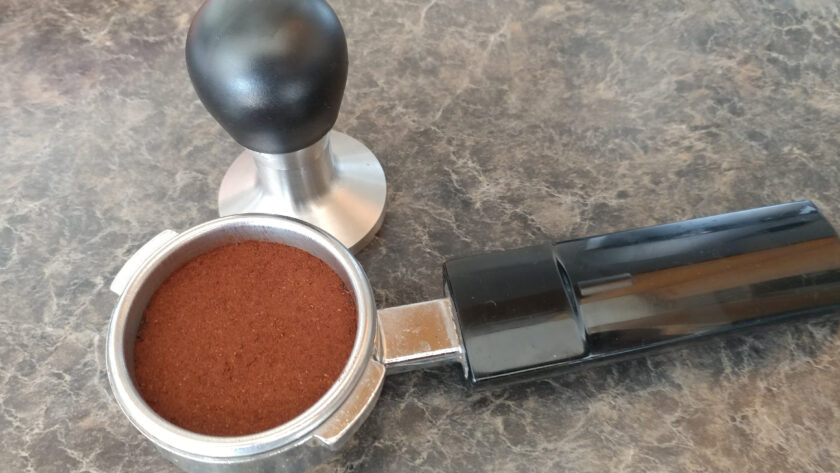
Naked portafilters are an option for those who like to perfect their technique and recipe. They are very sensitive to mistakes, so not a good choice if you are not a perfectionist, or you are a complete newbie.
The pressurized baskets are used for pre-ground coffee, but they do not produce great espresso. Just acceptable.
High-End Features
The point is: with high-end semi automatics you have a lot of extra features and controls. These features help you get the best espresso shot. Here are some great features to look for when you are buying the best espresso machine, and you are not on a tight budget:
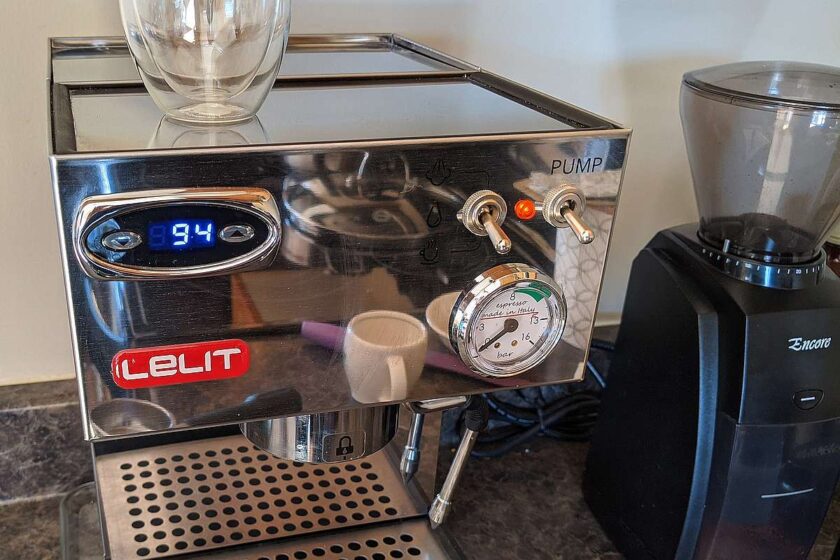
- An over-pressure valve to limit the pressure during extraction to 9 bars of pressure.
- Temperature Control
For those who look for espresso excellence, temperature control is critical. A machine equipped with a PID is the proper way to go. - Dual Boiler
Decent espresso machines use two heating blocks, one for espresso brewing and one for milk steaming. The high end machines use a double boiler, with separate temperature control. This will allow you to pull shots and steam milk at the same time. A cheaper, but decent alternative is to use a boiler for the espresso brewing, and a thermoblock unit for the steaming function. - Pressure gauge
Another nice feature is a pressure gauge that allows you to see what the pressure is during pulling the shot. This is great because you can easily troubleshoot your extraction times, and tamping pressure. - Pre-infusion
Pre-infusion is a feature that allows the grinds to slowly saturate with water. This, in turn, will prevent channeling and will ensure an even extraction. - Shot timer
Shot timer, so you don’t have to use a separate timer, or time your shot by counting. - Built-in coffee grinder
It is very rare, but some domestic machines come with a built-in grinder. I personally like them a separate unit.
Comparison with other types of espresso machines
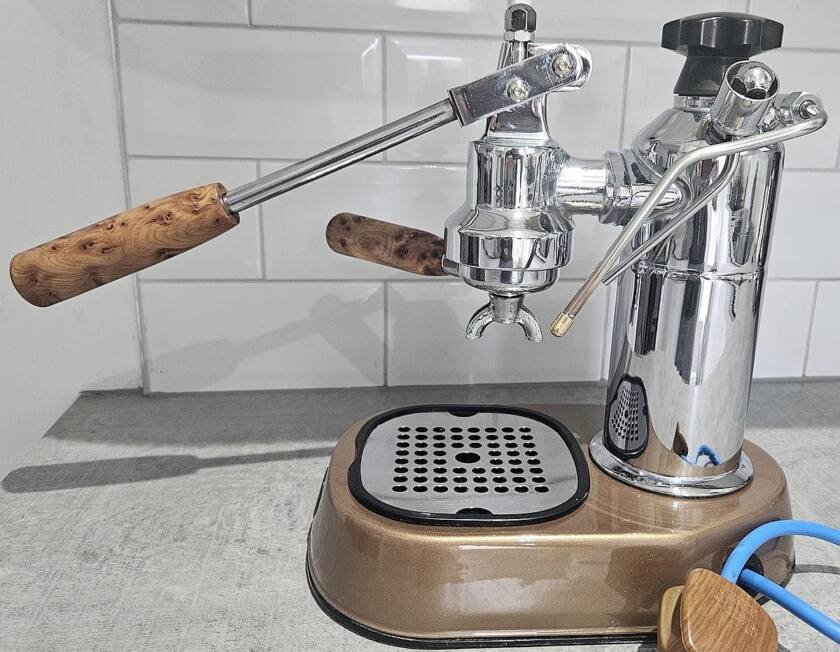
This article is not a comparison between the various types of espresso machines, however, I included a brief summary of that comparison, so you can make an informed decision. If you need to dive deeper into that comparison, we have an article on that subject.
- Semiautomatic espresso machines: These machines require some manual control over the brewing process. Users have to grind and tamp the coffee grounds and start/stop the extraction manually.
- Automatic espresso machines: These machines automate the brewing process, including grinding, tamping, and extraction. They have a built-in grinder, some even a tamper, and various ways to automate the extraction time. Users still have a lot of control over the brewing process, but enjoy the convenience of push-button operation.
- Super-automatic espresso machines: These machines take automation to the next level. From grinding to milk frothing, everything is done automatically. Users simply need to press a button and enjoy their espresso without any manual intervention. In general, the espresso taste is average.
- Manual espresso machines: As the name suggests, these machines require complete manual control. Users have to manually apply pressure to extract the espresso, making it a time-consuming and skill-demanding process.
Conclusion
Semi-automatic espresso machines offer a perfect balance between control and convenience for espresso lovers. They allow users to fine-tune their espresso shots, while automating certain aspects of the brewing process, making them an excellent choice for those who look for espresso perfection. The versatility and functionality of semi-automatic espresso machines can elevate your coffee brewing experience, bringing the taste of your favorite café into your kitchen.
